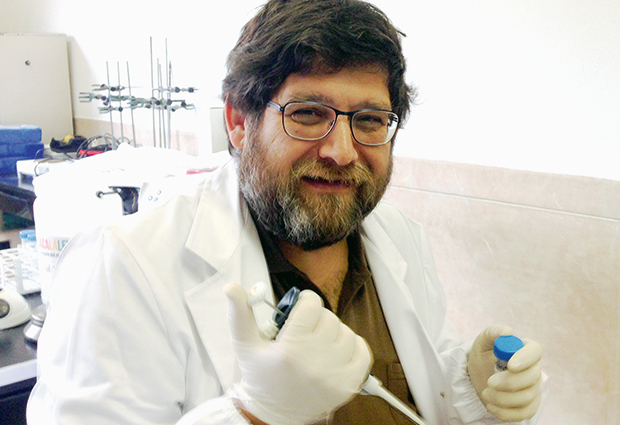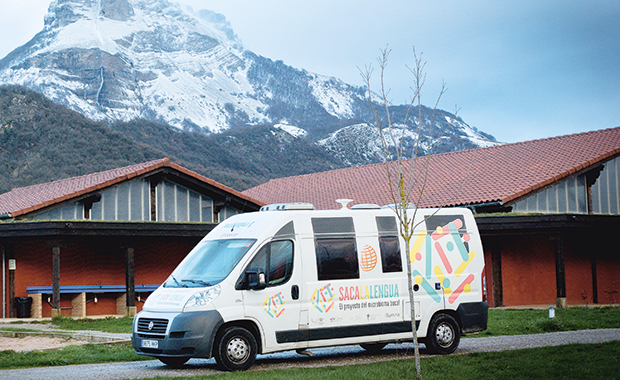
Stick out your tongue!
It’s not every day you see a molecular biologist jumping behind the wheel of a van in hot pursuit of data. Yet equipped with just a hand centrifuge and a battery-powered freezer, alumnus Luis Bejarano travelled the length and breadth of Spain to collect saliva samples from high school students, with the aim of learning more about the millions of tiny organisms that take up residence in our mouths.

Bejarano’s epic two and a half month journey took him through 40 cities and villages to collect more than 2000 samples from 15-year-old students for the “Saca la Lengua” project – a citizen science initiative run by a team working at the Centre for Genomic Regulation (CRG) in Barcelona. “It’s the longest business trip I’ve ever done,” Bejarano smiles, now safely back in his lab after clocking up more than 7000km on route. “Our goal was to collect samples to study the relationship between people’s behaviours, the environment, and the microorganisms that populate our mouths. But we also wanted students to get up close to research.”
We wanted to show that science can be fun, to raise awareness of the life sciences, and get people involved.
Using a mouthwash to flush some of the tiny inhabitants out of participants’ mouths, researchers aim to study the genetic footprint of different microbial communities to better understand their role in health and disease. “Students had to fill out an anonymous questionnaire, with more than 50 questions about their lifestyle,” Bejarano explains. “We want to know why certain individuals host certain microorganisms, and whether there are aspects related to their lifestyle that might have an effect.”
The tiny guests in our mouths have been linked not only to dental diseases such as cavities and bad breath, but less obviously to conditions such as pancreatic cancer and heart disease. Yet scientists know relatively little about why this is so. “Up until now, the biggest mouth microbiome sample studied was from a few hundred individuals,” Bejarano points out.

Cause or consequence?
By studying bacteria and fungi in the mouth, the team also aims to provide insights such as the impact of living in rural or urban areas and the influences of piercings or teeth brushing habits. “We are still some way off before we can begin to learn if certain microbes living in the mouth are the cause or consequence of certain environments or behaviours – but our study aims to identify correlations, which is a step towards this final goal,” he explains.
In achieving this aim, he points out the importance of involving students directly in the project: “For example, in some villages students asked us what they should write in the questionnaire if they drink water from a well – we hadn’t even thought about that!” Bejarano says. “Students and the wider public will also have the chance to analyse and interpret the data, while those who provide insights will appear as co-authors on research papers.”
‘Boot’ and ‘lab coat’ biology
Bejarano smiles recalling meetings with these students, who came from diverse communities and landscapes. “I was lucky not to end up with a flat tire!” he says. “It was a perfect combination of ‘boot’ and ‘lab coat’ biology, which often seem so remote from one another. We wanted to show that science can be fun, to raise awareness of the life sciences, and get people involved.”


